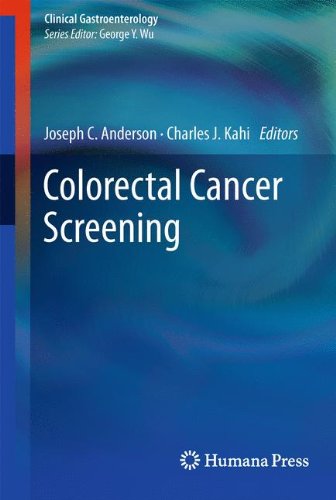

Most ebook files are in PDF format, so you can easily read them using various software such as Foxit Reader or directly on the Google Chrome browser.
Some ebook files are released by publishers in other formats such as .awz, .mobi, .epub, .fb2, etc. You may need to install specific software to read these formats on mobile/PC, such as Calibre.
Please read the tutorial at this link: https://ebookbell.com/faq
We offer FREE conversion to the popular formats you request; however, this may take some time. Therefore, right after payment, please email us, and we will try to provide the service as quickly as possible.
For some exceptional file formats or broken links (if any), please refrain from opening any disputes. Instead, email us first, and we will try to assist within a maximum of 6 hours.
EbookBell Team

0.0
0 reviewsColorectal Cancer Screening provides a complete overview of colorectal cancer screening, from epidemiology and molecular abnormalities, to the latest screening techniques such as stool DNA and FIT, Computerized Tomography (CT) Colonography, High Definition Colonoscopes and Narrow Band Imaging. As the text is devoted entirely to CRC screening, it features many facts, principles, guidelines and figures related to screening in an easy access format. This volume provides a complete guide to colorectal cancer screening which will be informative to the subspecialist as well as the primary care practitioner. It represents the only text that provides this up to date information about a subject that is continually changing. For the primary practitioner, information on the guidelines for screening as well as increasing patient participation is presentedd. For the subspecialist, information regarding the latest imaging techniques as well as flat adenomas and chromoendoscopy are covered. The section on the molecular changes in CRC will appeal to both groups. The text includes up to date information about colorectal screening that encompasses the entire spectrum of the topic and features photographs of polyps as well as diagrams of the morphology of polyps as well as photographs of CT colonography images. Algorithms are presented for all the suggested guidelines.
Chapters are devoted to patient participation in screening and risk factors as well as new imaging technology. This useful volume explains the rationale behind screening for CRC. In addition, it covers the different screening options as well as the performance characteristics, when available in the literature, for each test. This volume will be used by the sub specialists who perform screening tests as well as primary care practitioners who refer patients to be screened for colorectal cancer.